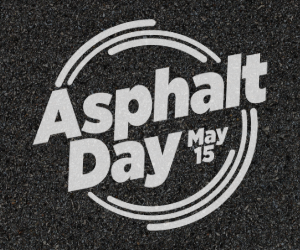
We talk with leading educators in the field of asphalt technology in an effort to tune in to academia on important industry issues.
Dr. Charles W. Schwartz, Ph.D. is a professor and chair of the civil and environmental engineering department of the University of Maryland.
What drew you to engineering, and transportation?
I grew up in Southeastern Wisconsin and could build a house with my family by the time I was 15. During my undergrad studies at M.I.T., I planned to be an electrical engineer. When I realized I didn’t have the math chops that were needed I transitioned to architecture, then structural engineering and then geotechnical engineering. By working on some high-profile airfield projects with Dr. Matt Witczak I found my place in pavement engineering. There are always interesting problems.
Is there a growing interest in cold in-place asphalt recycling?
There is more and more interest in cold in-place recycling for a lot of reasons. Agencies are doing mostly rehab and reconstruction on roads now and cold in-place recycling (CPIR) is one of the many options available to them. The practice increases sustainability and when you look at the engineering properties – the greenhouse gas emission savings are enormous.
Have you worked with radio-frequency identification (RFID) technology in asphalt paving?
During asphalt pavement construction, much QC and QA data is collected by contractors. Agencies tend to track pavement performance with GIS coordinates and mile points. A recent project I worked on used inexpensive RFID tags that were thrown in the truck and compacted in the pavement. We could go along later, read the tags and determine which load of asphalt ended up where on the roadway. This was a good leveraging of data. Many other related technologies use more active methods of RFID data collection to evaluate pavements.
How important is weather data for pavement evaluation?
Weather (or climate) data is very important for ME (mechanistic empirical) studies. We can now, through MEPDG (Mechanistic-Empirical Design Guide) work, systematically look at the impact weather plays on rutting and other pavement distresses. By transitioning from ground-based weather station data to NASA’s MERRA (Modern Era Retrospective analysis for Research and Applications) we can simulate a worldwide climate model dating back to 1979. This important information is now utilized in the LTTP database Infopave and further helps us better evaluate pavement performance.
Where should today’s students focus their asphalt research?
I encourage students to ask “what are the really big questions?” So much of asphalt-related research is considered small-bore, like comparing the warm mix asphalt used in one state to that of the state next door. We need to focus on important questions that are going to help us down the line. There are many new materials being used in asphalt paving. We need to find ways to quickly demonstrate their performance (through test tracks and accelerated testing) so agencies can use them confidently and effectively.













